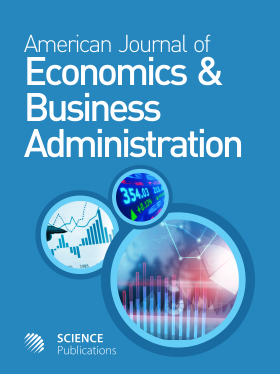Cost Efficiencies and Rankings of Flagship Universities
- 1 Wright State University, United States
Abstract
Problem statement: Each state in the U.S. touts a premier university as the flagship of its publicly funded higher education system. With decreased government budgets and increased interest in public management reforms, these institutions are being pressured to provide evidence of and set examples for ever greater improvements in operating cost efficiencies. The problem, however, is that empirical measures of their efficiencies or inefficiencies can be sensitive and, therefore, vary widely depending upon the underlying model specification. Approach: The study used stochastic frontier analysis to estimate university cost inefficiencies over the 2005-09 academic years. Transom and Cobb-Douglas specifications were combined with two inefficiency models that treated university environmental factors as inefficiency determinants and as cost determinants. University inefficiency rankings were provided on the basis of mean scores and compared to the rankings obtained under the alternative models. Results: University mean inefficiency scores were estimated to vary between 1.19 and 1.32, indicating that costs were on average between 19 and 32% above the minimum frontier costs. At the individual university level, inefficiencies ranged from 1.015-2.43. Two specifications indicate that efficiency improvements occurred in the 2008-09 academic year. A university ranking of mean scores indicated an 87% difference between the most and least inefficient university. There was substantial sensitivity of rankings to model choice, but university rank status was found to be most unstable in the middle of the ranking distribution. Conclusion: The findings offer caution in proceeding to stochastic frontier estimates of inefficiencies without careful consideration and investigation of the sensitivities of such estimates to model choices. This study showed that advice is applicable, at least, to inefficiency estimates of U.S. flagship universities. Whether or not it is applies equally to other groups of universities is a matter of consideration for future studies.
DOI: https://doi.org/10.3844/ajebasp.2011.596.603

- 4,298 Views
- 2,854 Downloads
- 1 Citations
Download
Keywords
- Integrated Postsecondary Education Data System (IPEDS)
- inefficiency estimates
- mean inefficiency scores
- careful consideration
- ranking distribution
